Ancient Greek Medicine › Byzantine Government » Ancient origins
Articles and Definitions › Contents
- Ancient Greek Medicine › Antique Origins
- Byzantine Government › Ancient History
Ancient civilizations › Historical and archaeological sites
Ancient Greek Medicine › Antique Origins
Definition and Origins
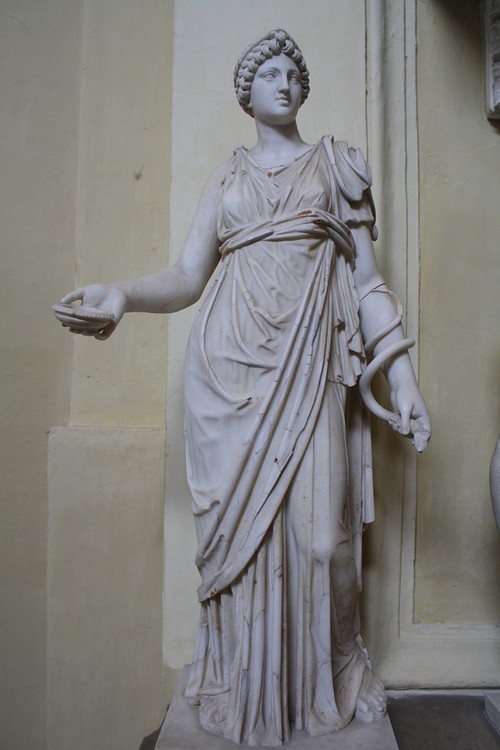
In ancient Greek medicine illness was initally regarded as a divine punishment and healing as, quite literally, a gift from the gods. However, by the 5th century BCE, there were attempts to identify the material causes for illnesses rather than spiritual ones and this led to a move away from superstition towards scientific enquiry, although, in reality, the two would never be wholly separated. Greek medical practitioners, then, began to take a greater interest in the body itself and to explore the connection between cause and effect, the relation of symptoms to the illness itself and the success or failure of various treatments.
GREEK VIEWS ON HEALTH
Greek medicine was not a uniform body of knowledge and practice but rather a diverse collection of methods and beliefs which depended on such general factors as geography and time period and more specific factors such as local traditions and a patient's gender and social class. Nevertheless, common threads running through Greek medical thought included a preoccupation with the positive and negative effects of diet and a belief that the patient could actually do something about their complaint, in contrast to a more fatalistic and spiritual mindset of earlier times.
FOR THE ANCIENT GREEKS, THERE COULD BE BOTH A DIVINE & A PHYSICAL CAUSE OR REMEDY FOR ILLNESSES.
However, the distinction between the spiritual and physical worlds are often blurred in Greek medicine, for example, the god Asclepius was considered a dispenser of healing but also a highly skilled practical doctor. The god was called upon by patients at his various sanctuaries (notably Epidaurus ) to give the patient advice through dreams which the site practitioners could then act upon. Grateful patients at the site often left monuments which reveal some of the problems that needed to be treated, they include blindness, worms, lameness, snakebites and aphasia. As Epidaurus illustrates, there could, then, be both a divine and a physical cause or remedy for illnesses.
Lifestyle and such factors as heat, cold and trauma were discovered to be important factors in people's health and they could alleviate or worsen the symptoms of an illness or the illness itself. It was also recognised that a person's physical constitution could also affect the severity of, or susceptibility to, an illness. There was also a growing belief that a better understanding of the causes of an illness' symptoms could help in the fight against the illness itself. With a greater knowledge of the body there also came a belief that the balance of the various fluids (humours) within it could be a factor in causing illness. So too, the observation of symptoms and their variations became a preoccupation of the Greek doctor.
GREEK MEDICAL SOURCES
Textual sources on Greek medical practice begin with scenes from Homer ’s Iliad where the wounded in the Trojan War are treated, for example, Patroclus cleaning Eurypylus' wound with warm water. Medical matters and doctors are also frequently mentioned in other types of Greek literature such as comedy plays but the most detailed sources come from around 60 treatises often attributed to Hippocrates (5th to 4th century BCE), the most famous doctor of all. However, none of these medical treatises can be confidently ascribed to Hippocrates and next to nothing is known about him for certain.
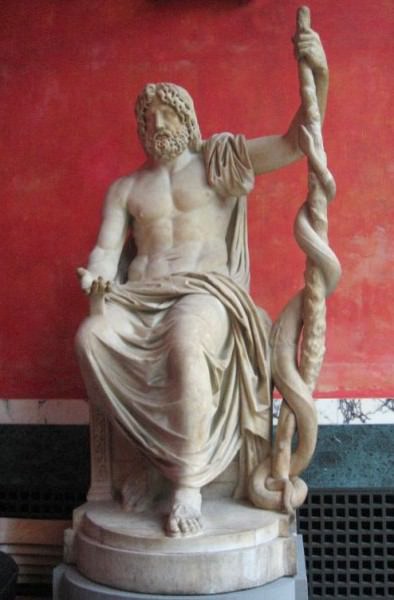
Statue of Asklepios
The Hippocratic texts deal with all manner of medical topics but can be grouped into the main categories of diagnosis, biology, treatment and general advice for doctors. Another source is the fragmentary texts from the Greek natural philosophy corpus dating from the 6th to 5th century BCE. Philosophers in general, seeing the benefits of good health on the mind and soul, were frequently concerned either directly or indirectly with the human body and medicine. These thinkers include Plato (especially in Timaeus ), Empedocles of Acragas, Philistion of Locri and Anaxagoras.
DOCTORS & PRACTITIONERS
As there were no professional qualifications for medical practitioners then anyone could set themselves up as a doctor and travel around looking for patients on whom to practise what was known as the tekhnē of medicine (or art, albeit a mysterious one). The Spartans did, though, have specific personnel responsible for medical care in their professional army. Also, practitioners do seem to have generally enjoyed a high regard despite the lack of a recognised professional body to supervise and train would-be doctors and the odd mad doctor that crops up in Greek Comedy. As Homer states in the Iliad (11.514), 'a doctor is worth many other men'. Not only doctors gave medical advice and treatment but other groups who could utilise their practical experience such as midwives and gym trainers.
THE HIPPOCRATIC OATH WAS ACTUALLY A RELIGIOUS DOCUMENT ENSURING A DOCTOR OPERATED WITHIN & FOR COMMUNITY VALUES.
The famous Hippocratic Oath was probably reserved for a select group of doctors and it was actually a religious document ensuring a doctor operated within and for community values. With the Oath the practitioner swore by Apollo, Hygieia and Panacea to respect their teacher and not to administer poison, abuse patients in any way, use a knife or break the confidentiality between patient and doctor.
Famous medical practitioners included the 4th century BCE figures of Diocles of Carystus (who had a head bandage and spoon instrument for removing arrowheads named after him), Praxagoras of Cos (noted for his 'discovery' of the pulse and being the first to distinguish veins from arteries), and the Athenians Mnesitheus and Dieuches. These experts in their field could examine a patient's face and make a diagnosis helped by information such as the patient's diet, bowel movements, appetite and sleeping habits. Treatments often utilised natural plants such as herbs and roots but could also include the use of amulets and charms. Surgery was generally avoided as it was considered too risky but minor operations may have been carried out, especially on soldiers wounded in battle.
MEDICAL TREATMENTS: WAR
Wounded soldiers were actually one of the best ways for a doctor to learn his trade and widen his knowledge of the human body and its internal workings. There was probably also less risk of the soldier causing problems if things went wrong, which could happen with private patients. Aside from the health problems which may also have affected civilians such as malnutrition, dehydration, hypothermia, fever and typhoid, those doctors treating soldiers had to deal with wounds made by swords, spears, javelins, arrows and projectiles from slings. Medical practitioners knew the importance of removing foreign bodies such as arrowheads from the wound and the necessity to properly clean the wound (which is why arrowheads became barbed to be more difficult to remove and therefore more lethal). Greek doctors knew that it was important to stop excessive blood loss as soon as possible in order to prevent haemorrhage (although they also thought blood-letting could be beneficial too). Surgery may also have included the use of opium as an anaesthetic, although the many references in literature to patients being held down during surgery would suggest that the use of anaesthetic was rare.

Caduceus
Post-operation, wounds were closed using stitches of flax or linen thread and the wound dressed with linen bandages or sponges, sometimes soaked in water, wine, oil or vinegar. Leaves could also be used for the same purpose and wounds may also have been sealed using egg-white or honey. Post-operation treatment was also considered - the importance of diet, for example, or the use of plants with anti-inflammatory properties such as celery.
DISCOVERIES & DEVELOPMENTS
Over time doctors came to acquire a basic knowledge of human anatomy, assisted, no doubt, by the observation of grievously wounded soldiers and, from the 4th century BCE, animal dissection. However, some claimed this was useless as they believed the inner body changed on contact with air and light and still others, as today, protested that using animals for such purposes was cruel. Human dissection would have to wait until Hellenistic times when such discoveries as the full nervous system were discovered. Nevertheless, there was an increasing urge to discover what made a healthy body function well rather than what had made an unhealthy one break down. The lack of practical knowledge, though, did result in some fundamental errors such as Aristotle ’s belief that the heart and not the brain controlled the body and the idea proposed in the treatise On Ancient Medicine (5th century BCE) that physical pain arises from the body's inability to assimilate certain foods.
Greek medical practice may have included errors, perhaps many and probably even fatal ones, but Greek practitioners had started the medical profession in the right direction. Observation, experience and experimentation meant that those who followed in Hellenistic and Roman times such as Galen and Celsus could continue their enquiries along the long road towards greater and more accurate scientific knowledge of the human body, the illnesses it is susceptible to, and the potential cures available.
Byzantine Government › Ancient History
Definition and Origins
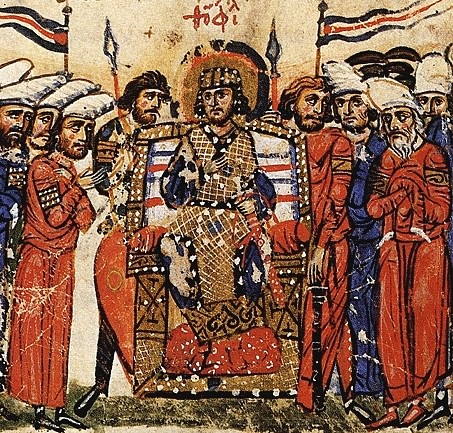
The government of the Byzantine Empire was headed and dominated by the emperor, but there were many other important officials who assisted in operating the finances, judiciary, military. and bureaucracy of a huge territory. Without elections, the ministers, senators, and councillors who governed the people largely acquired their position through imperial patronage or because of their status as large landowners. Government was multi-levelled based on the geographical division of the empire’s population and although corruption, rebellions, and invasions threatened the functioning of the system, and even caused its reduction in scale, the system nevertheless survived for centuries to become one of the most sophisticated apparatus of government seen in any empire in history.
THE EMPEROR
The Byzantine emperor (and sometimes empress) ruled as an absolute monarch and was the commander-in-chief of the army and head of the Church and government. He controlled the state finances, and he appointed or dismissed nobles at will, granting them wealth and lands or taking them away. The position was conventionally hereditary, but new dynasties were regularly founded as usurpers took the throne, usually military generals backed by the army. Unlike in the west, the Byzantine emperor was also head of the Church and so could appoint or dismiss the most important ecclesiastical role in the empire, the Patriarch or bishop of Constantinople. Further, the emperor was widely regarded as having been chosen by God to rule for the good of the people.
The emperor was distinguished by his magnificent royal residence, the Great Palace of Constantinople, and by his imperial regalia - the jewelled crown, belt, cloak, and brooch seen in so many depictions in Byzantine art. His or her image was widely seen as it appeared on coinage, official seals, weights, mosaics, and sculpture.
THE EMPEROR WAS SUPPOSED TO CONSULT THE SENATE & PARTICULARLY THE SMALLER GROUP OF THE MOST SENIOR SENATORS - THE SACRUM CONSISTORIUM.
Given the size of the empire and the complexity of all the different facets of government necessary for it to run smoothly, the emperor was, by necessity, obliged to consult with a team of close advisors. Such members of an inner circle at court, the comitatus, need not have held any formal position, but there were other permanent offices and positions which helped disseminate the imperial will to all corners of the empire. There were, in addition, the court eunuch chamberlains ( cubicularii ) who served the emperor in various personal duties but who could also control access to him. Eunuchs also held positions of responsibility themselves, chief amongst these being the holder of the emperor's purse, the sakellarios whose powers would increase significantly from the 7th century CE.
THE SENATE & IMPERIAL MINISTERS
The main forum of government was the Senate of Constantinople, which was made up of aristocratic males who were given their position by the emperor. Created by Constantine I (r. 306-337 CE), it was modelled on the Roman Senate. Although in practice the emperor could make any decision he wished, at least in theory he was supposed to consult the Senate and particularly the smaller group of the most senior senators known as the sacrum consistorium. This was especially so for matters of state importance - declarations of war, treaties of alliance, and so on. The Senate, therefore, was really only an advisory body. It could, though, function as the highest court in the land in rare cases of high treason. Leo VI (r. 886-912 CE) reduced the role of the Senate even further, but it would remain as an institution until the fall of the empire in the mid-15th century CE.
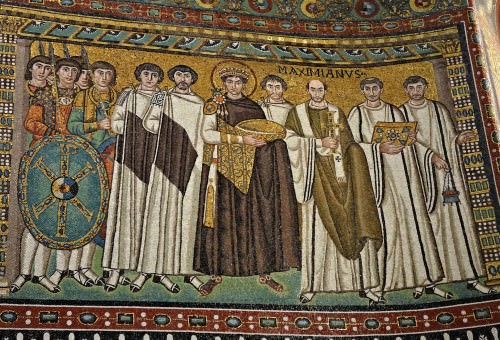
Empreror Justinian & His Court
Key ministers who reported to the emperor but had some autonomy of authority included the following:
- the quaestor sacri palatii or chief legal officer and head of the judiciary
- the magister officiorum who looked after the general administration of the palace, the army and its supplies, the secret police, transport, and foreign affairs
- the cursus publicus who supervised the public post
- the comes sacrarum largitionum who controlled the state mint ( Sakellion ) and supervised customs houses, the state workshops and armouries, and the state's gold and silver mines. He collected some specific taxes, paid out extraordinary bonuses to the army, and supervised the distribution of clothing to the court.
- the comes rei privatae who looked after the imperial estates and the emperor's personal wealth
- the praepositus sacri cubiculi or chief eunuch who typically controlled who could have a personal audience with the emperor
- the Urban Prefect or Eparch who was, essentially, the mayor of Constantinople and had to run the city, manage its prisons, ensure public order was maintained, supervise building projects, and organise public spectacles.
The emperor and the above officials were supported by various ministries and their heads ( domestikoi ) such as the head of orphanages ( orphanotrophos ) and the head of public records ( protasekretis ), as well as countless minor officials ( logothetes ) and archivists ( chartoularioi ).
REGIONAL GOVERNMENT
The Byzantine Empire was divided into the following territorial and administrative units:
- Prefectures (4)
- Dioceses (12)
- Provinces (100+)
- Town Councils
There were four prefectures, each governed by a Praetorian Prefect. The most important was the Praetorian of the East (the others governed Gaul, Italy and Illyricum) and, like his colleagues, he was responsible for all administrative, fiscal, and judicial affairs in his area. Prefects supervised and maintained the public post, roads, bridges, post-houses, and granaries in their area.
MEMBERS OF A COUNCIL OR CURIA WERE USUALLY THE WEALTHIER LOCAL CITIZENS, THE LAND-OWNING ELITE (ARCHONTES), WHO WERE NOT ELECTED.
The prefectures were further divided into dioceses with their respective governors ( vicarii ) and each of these into administrative provinces, each with its own governor who supervised the individual city councils or curiae. Cities which were the seat of a governor such as Ephesus, Sardis and Aphrodisias, flourished as the governors sought to leave lasting monuments in their city and support the culture there. This was usually to the detriment of smaller towns in the province, and there are even records of emperors admonishing governors for dismantling monuments and stealing the stones in lesser towns in order to beautify the provincial capital.
Members of a curia were usually the wealthier local citizens, the land-owning elite ( archontes ), and although there were no elections, the ordinary people could voice their opinions at public events by acclaiming or booing public figures, just as factions of the crowd at the Hippodrome of Constantinople sometimes did towards the emperor. Public opinion might not bring the dismissal of councillors or other government officials but it could affect their chances of promotion as the emperor and central government were always on the watch for signs of public unrest in the provinces. Riots did occasionally break out, and the damage and economic disruption they caused was best avoided.
Local councillors were responsible for all public services and the collection of taxes in their town and its surrounding lands (curiously, any shortfall had to be made up by the councillors themselves until that onerous obligation was abolished in the early 6th century CE). This was a deliberate policy by emperors to separate tax revenue from anyone holding positions of military power and, therefore, reduce the possibility that a usurper could fund that portion of the army he commanded against the state. The main tax was a land tax called the annona, which was calculated in consideration of a census ( indictio ) taken every 5, and then later, 15 years.
Local councils also had to help with national services such as providing horses for the empire's postal system. The local councils could directly petition the emperor so that there was both a direct and indirect chain of authority through which imperial policy was transmitted to the ordinary people. Leo VI abolished the councils in the 9th century CE, and their duties were redistributed to other officials. Finally, to ensure that government policy was carried through in practice, there was a whole army of imperial inspectors who were regularly dispatched to the provinces.
In the 7th century CE, as the empire shrank significantly and what remained became increasingly threatened by its neighbours. Emperor Heraclius (r. 610-641 CE), or his immediate successors, permanently changed the system of central government so that governors of the newly created large provinces or themes ( themata ) were now, in effect, provincial military commanders ( strategoi ) with civil responsibilities who were directly responsible to and reported to the emperor himself. The system of Praetorian Prefects was, therefore, abolished, and the logothetes, those minor officials looked down upon previously, became more instrumental in the successful running of the government and civil administration.
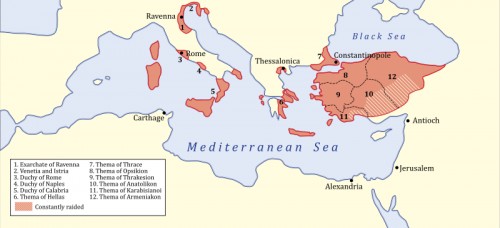
Byzantine Empire, 717 CE
Thus the whole bureaucracy was simplified and the number of officials massively reduced with the most important logothetesbeing:
- the logothetes tou stratiotikou who was in charge of military affairs from spending to armaments and supplies
- the logothetes tou genikou who was in charge of the land tax amongst many others
- the logothetes tou dromou who was in charge of foreign affairs, internal security, the public post, protection of the emperor, roads, and official public ceremonies.
In the 8th century CE, when armies of certain themes and strategoi posed a threat to the emperor's position, the themes were reorganised into smaller regional units to reduce their military power. By the 11th century CE, the theme system went into decline as emperors like Basil II (r. 976-1025 CE) preferred to rely on the greater loyalty of their own private army. The strategoi were gradually replaced by other officials with less overall powers such as the doux or katepano (military governor) and praitor (responsible for fiscal and judicial matters).
LICENSE:
Article based on information obtained from these sources:with permission from the Website Ancient History Encyclopedia
Content is available under License Creative Commons: Attribution-NonCommercial-ShareAlike 3.0 Unported. CC-BY-NC-SA License